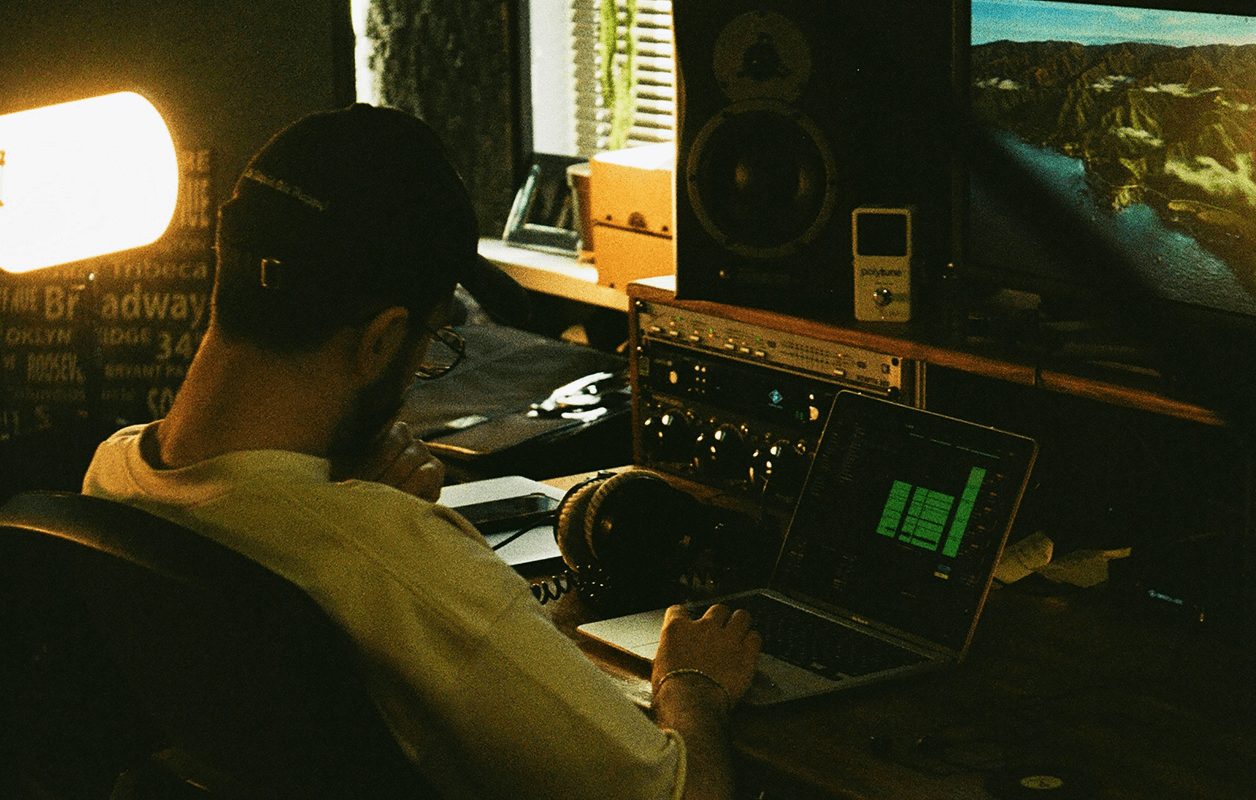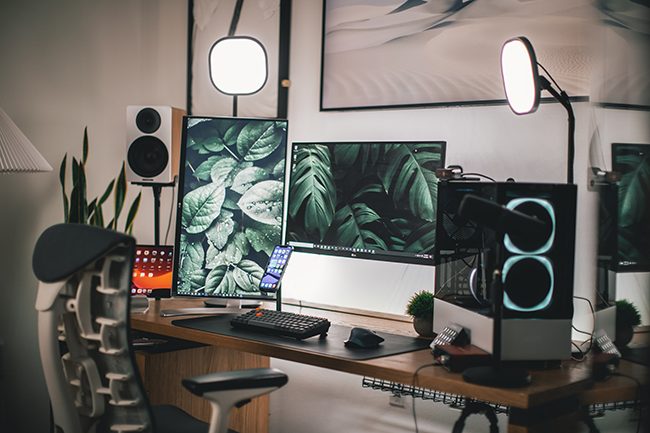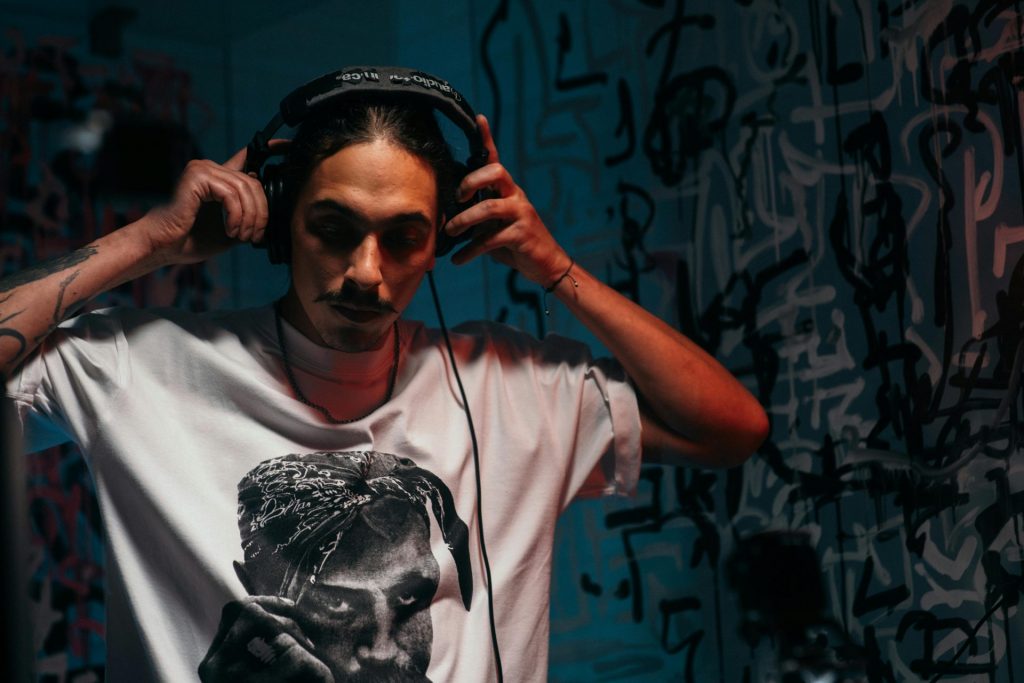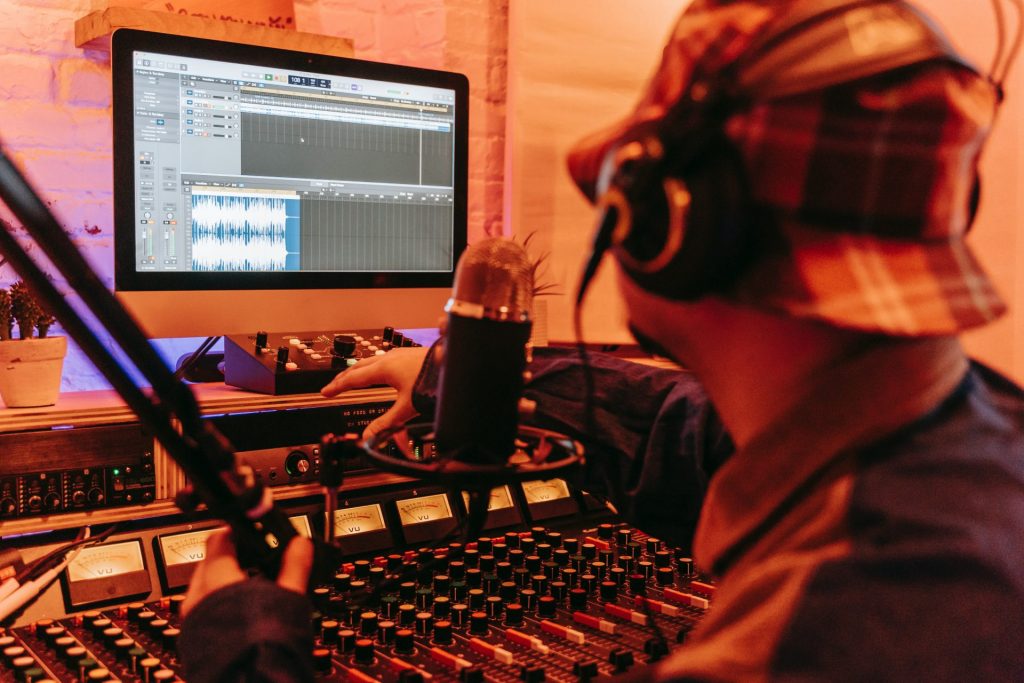
It’s a great feeling to know that a venue owner, promoter, or event planner has entrusted you to define the sound for a night. Your sensibility for music is spot-on and it’s earning you money.
But perhaps you also have a creative streak and want to make something of your own to contribute to the musical experience. Music production is a broad field and it would be impossible to cover every aspect of it in one article, but here is an overview to help you get started if you want to create your own tracks to add to your DJ sets.

How to Create Original Music for Your DJ Sets
Decide if you want to produce records the “old school” way or “in the box.”
Many records you use in your DJ sets are still made in large analog studios with full bands. If you have the budget and/or play instruments, you can get studio time and bring the band in to track a record. The studio engineer can mix the record and send you the final copy. Another option is to purchase a digital audio workstation (DAW) and start making beats from home. There are many different DAWs to consider, but some of the most popular are Logic, Ableton Live, and ProTools. Once you own the DAW, you now have a blank canvas to start creating your tracks.
Consider if you want to base your track around loops or chord progressions.
Many contemporary songs are built around 8- and 16-bar loops that cycle throughout a song. Certain elements, such as a synth or hi-hat, may be added or subtracted throughout the song to create variation. Another option is to write a song around a guitar, piano, or synth chord progression that varies depending on whether it’s the verse, the chorus, or the bridge.
Understand how to create MIDI tracks and audio tracks.
In your DAW, you have the option to create a MIDI track or an audio track. An audio track is a sample of real audio. A MIDI track is a track with musical notes programmed into the computer. Each note in MIDI has features such as pitch, velocity/volume, and length. In your DAW, you can program drum patterns and melodies in MIDI, and then play the MIDI information through software synths and drum machines.
Each DAW has its own native synths and drum machines that play MIDI notes, but you can also purchase external synths from manufacturers such as Native Instruments. It is common for drum patterns to be programmed in MIDI, and then for the MIDI notes to trigger various audio samples, such as kicks and snares, to play in time.
Consider buying a hardware MIDI drum machine and keyboard so that you can track MIDI notes into your computer as you play and hear them on the instrument. Additionally, BPM Create also offers downloadable MIDI files that you can use and alter in your productions.

Understand how to work with samples.
In your DAW, you can copy, paste, and manipulate audio samples. For example, in an audio track, you can place a kick on every beat of the song. Using the DAW, you can also alter the pitch and time-stretch your sample. Additionally, you can chop up the sample. These actions can generate new and interesting creative possibilities for your song. BPM Create has over one million royalty-free samples you can download and manipulate for your productions.
Invest in an external interface for tracking instruments and vocals.
If you buy an external interface such as the Apollo from Universal Audio, you can attach it to your computer and then record audio from instruments or vocals into your track. You can then blend these recordings into your track or manipulate them as samples.
Understand the concept of keys and tempo.
Most songs are based around a certain scale, so your song will sound most coherent if all the parts, from the vocals to the bass line, are in one scale. Most DAWs have plug-ins that will snap MIDI notes into a certain scale, and you can purchase Autotune or Waves Tune to adjust vocal recordings to fit the scale of your song. Your DAW will be fixed at a certain tempo (which you can adjust), and you can use the quantize feature to snap your MIDI notes to the beats of the song.
Be aware of the conventions of your preferred genre.
For example, if you are a house DJ and you want to create house music that fits in with the rest of the music in your set, consider creating songs that have a tempo of 120-130 bpm and a four-to-the-floor kick. If you want to create a hip hop song, study and re-create the drum patterns of popular hip hop songs, and keep the tempo between 60 and 95 bpm.
Understand how to mix and master a track.
After a producer lays down the parts of the songs, they mix the various tracks together to create a coherent and polished song. Aspects of mixing include volume balancing, EQ adjustment, compression, and panning. You can hire a mixing engineer to mix your track, or you can start learning the process yourself using your DAW’s native mixing features or external plug-ins from a manufacturer such as iZotope. As you mix your song, it’s great to compare it to a commercially released reference track.
Create instrumental intros and outros to use to blend in and out of your song.
If you are a DJ who transitions from song to song using beat-matching, you have probably used “intros” and club versions from your record pool such as BPM Supreme. In your own song, you can create eight bars of instrumental music before and after the lyrics so that you can blend your song with the previous or upcoming song.

The possibilities for music creation are now boundless, thanks to powerful and accessible digital tools. Once your track is finished, don’t let it sit on your hard drive – it’s time for the real test: the dance floor! Export that WAV file into your DJ software and get ready to drop it.
Keep in mind that if someone hires you to DJ their event, such as a wedding or bar night, they are probably expecting you to play many mainstream songs that people know, so it might not be the best time to drop only your own music. However, you may be able to find a good moment early or late in the night to test out your song or find a venue or promoter that is looking for a DJ who creates and blends in their own material. You can also DJ your own music online or throw your own parties.
Use your judgment as to when it’s appropriate to drop in your own music, and you may be surprised at how positively your crowd responds to your new creation.

